Anticholinergics are drugs that oppose the effects of acetylcholine. In essence, they also lyse and block the effects of parasympathetic nervous system (PNS) so they are also called as parasympatholytics. Atropine is currently the only widely used anticholinergic drug. Other common examples include meclizine, scopolamine and ipratropium.
Anticholinergics: Generic and Brand Names
Here is a table of commonly encountered anticholinergic agents, their generic names, and brand names:
- Anticholinergics
- atropine sulfate
- ipratropium (Atrovent)
- meclizine (Bonine, Antivert)
- methscopolamine (Pamine)
- scopolamine (Transderm Scop)
- tiotropium (Spiriva)
Disease Spotlight: Gastrointestinal Ulcers
- Anticholinergics were once very widely used to decrease GI activity and secretions. However, more specific and less toxic drugs are available now and the utilization of this drug class is now limited.
- GI ulcers are basically erosions in the lining of the GIT caused by increased HCl production most commonly from H. pylori infection. Patients with GI ulcers suffer from burning abdominal pain, nausea, and acid reflux.
Therapeutic Action
The desired and beneficial actions of anticholinergics are as follows:
- Competitively blocking the ACh receptors at muscarinic cholinergic receptor sites that are responsible for mediating the effects of the parasympathetic postganglionic impulses.
- Atropine, the prototype drug, is derived from the plant belladonna. It is used to depress salivation and bronchial secretions and to dilate the bronchi, but it can thicken respiratory secretions (causing obstruction of airways).
- Atropine and scopolamine work by blocking only the muscarinic effectors in the parasympathetic nervous system and the few cholinergic receptors in the SNS.
Indications
Anticholinergics are indicated for the following medical conditions:
- Prevention of nausea, vomiting, and dizziness associated with motion sickness.
- Adjunctive therapy for treatment of GI ulcers
- Decrease secretions before anesthesia or intubation
- Maintenance treatment of bronchospasm associated with COPD.
- Treatment of irritable or hyperactive bowel in adults.
Here are some important aspects to remember for indication of anticholinergics in different age groups:
Children
- More sensitive to the adverse effects of the drug (e.g. constipation, urinary retention, heat intolerance, confusion).
- Dicyclomine is not recommended for use in children.
Adults
- Adults should be cautioned of these drugs’ adverse effects.
- Use of these drugs among pregnant women is not allowed because they can cross placenta and cause adverse effects to the fetus.
Older adults
- Dose adjustment is needed as this age group is also more susceptible to drug side effects.
- They are more likely to have toxic levels of the drug because of renal or hepatic impairments.
Pharmacokinetics
Here are the characteristic interactions of anticholinergics and the body in terms of absorption, distribution, metabolism, and excretion:
| Route | Onset | Peak | Duration |
|---|---|---|---|
| IM | 10-15 min | 30 min | 4 h |
| IV | Immediate | 2-4 min | 4 h |
| Subcutaneous | Varies | 1-2 h | 4 h |
| Topical | 5-10 min | 30-40 min | 7-14 d |
Contraindications and Cautions
The following are contraindications and cautions for the use of anticholinergics:
- Allergy to any component of the drug. To prevent hypersensitivity reaction
- Glaucoma. Can be exacerbated by blockade of PNS.
- Intestinal atony, paralytic ileus, GI obstruction. Can be exacerbated with further slowing of GI activity.
- Pregnancy. Potential adverse effects on the fetus.
Adverse Effects
Use of anticholinergic agents may result to these adverse effects:
- CNS: blurred vision, pupil dilation, photophobia, cycloplegia, increased intraocular pressure, weakness, dizziness, insomnia
- CV: tachycardia, palpitation
- GI: dry mouth, altered taste perception, nausea, heartburn, constipation
- GU: urinary hesitancy and retention, heat prostration
Interactions
The following are interactions involved in the use of anticholinergics:
- Antihistamines, antiparkinsonisms, MAOIs, TCAs. These drugs also have anticholinergic effects so incidence of anticholinergic effects increases.
- Phenothiazines. Decreased effectiveness of this drug.
- Burdock, rosemary, turmeric. Risk for exacerbated anticholinergic agents
Nursing Considerations
Here are important nursing considerations when administering anticholinergics:
Nursing Assessment
These are the important things the nurse should include in conducting assessment, history taking, and examination:
- Assess for contraindications or cautions (e.g., history of allergy to drug, GI obstruction, hepatorenal dysfunction, etc.) to avoid adverse effects.
- Establish baseline physical assessment to monitor for any potential adverse effects.
- Assess neurological status (e.g., orientation, affect, reflexes) to evaluate any CNS effects.
- Assess abdomen (e.g., bowel sounds, bowel and bladder patterns, urinary output) to evaluate for GI and GU adverse effects.
- Monitor laboratory test results to determine need for possible dose adjustments and to identify potential toxicity.
Nursing Diagnoses and Care Planning
Here are some of the nursing diagnoses that can be formulated in the use of this drug for therapy:
- Acute pain related to GI, CNS, GU, and CV effects
- Decreased cardiac output related to CV effects
- Impaired urinary elimination related to effects on the bladder
- Constipation related to GI effects
Implementation with Rationale
These are vital nursing interventions done in patients who are taking anticholinergics:
- Ensure proper administration of the drug to ensure effective use and decrease the risk of adverse effects.
- Monitor patient response (e.g., blood pressure, ECG, urine output) for changes that may indicate need to adjust dose.
- Provide comfort measures (e.g., sugarless lozenges, lighting control, small and frequent meals) to help patient cope with drug effects.
- Provide patient education about drug effects and warning signs to report to enhance knowledge about drug therapy and promote compliance.
Evaluation
Here are aspects of care that should be evaluated to determine effectiveness of drug therapy:
- Monitor patient response to therapy (improvement in condition being treated).
- Monitor for adverse effects (e.g., photophobia, heat intolerance, urinary retention).
- Evaluate patient understanding on drug therapy by asking patient to name the drug, its indication, and adverse effects to watch for.
- Monitor patient compliance to drug therapy.
Recommended Resources
Our recommended nursing pharmacology resources and books:
Disclosure: Included below are affiliate links from Amazon at no additional cost from you. We may earn a small commission from your purchase which will help support us. Thank you! For more information, check out our privacy policy.
Pharm Phlash! Pharmacology Flash Cards #1 BEST SELLER!
Test-yourself review cards put critical clinical information for nearly 400 of the top generic medications at your fingertips. And, you can count on them for accuracy, because each card is based on content from Davis’s Drug Guide for Nurses. Increase your test scores in pharmacology class.
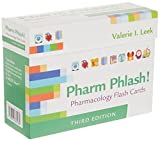
Focus on Pharmacology (8th Edition)
Focus on Nursing Pharmacology makes challenging concepts more approachable. Engaging learning features cultivate your clinical application, critical thinking and patient education capabilities. This updated 8th edition builds on your knowledge of physiology, chemistry and nursing fundamentals to help you conceptualize need-to-know information about each group of drugs.

Pharmacology Made Incredibly Easy (Incredibly Easy! Series®)
Nursing pharmacology guide offers step-by-step guidance so you can grasp the fundamentals in enjoyable Incredibly Easy style. This is the perfect supplement to class materials, offering solid preparation for NCLEX® as well as a handy refresher for experienced nurses. Colorfully illustrated chapters offer clear, concise descriptions of crucial nursing pharmacology concepts and procedures.

Lehne’s Pharmacology for Nursing Care (11th Edition)
The Eleventh Edition of Lehne’s Pharmacology for Nursing Care provides a thorough understanding of key drugs and their implications for nursing care. This text, written by renowned nursing educators, helps you comprehend and apply pharmacology principles. A clear and engaging writing style simplifies complex concepts, making even the most challenging pharmacology content enjoyable. We recommend this book if you want a comprehensive nursing pharmacology guide.
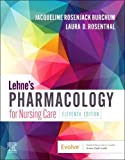
Nursing Drug Handbook
Nursing2023 Drug Handbook delivers evidence-based, nursing-focused drug monographs for nearly 3700 generic, brand-name, and combination drugs. With a tabbed, alphabetical organization and a “New Drugs” section, NDH2023 makes it easy to check drug facts on the spot.

Pharmacology and the Nursing Process
The 10th edition of Pharmacology and the Nursing Process offers practical, user-friendly pharmacology information. The photo atlas contains over 100 unique illustrations and photographs depicting drug administration techniques. Updated drug content reflects the most recent FDA drug approvals, withdrawals, and therapeutic uses.

Mosby’s Pharmacology Memory NoteCards: Visual, Mnemonic, and Memory Aids for Nurses
The 6th edition of Mosby’s Pharmacology Memory NoteCards: Visual, Mnemonic, & Memory Aids for Nurses incorporates illustrations and humor to make studying easier and more enjoyable. This unique pharmacology review can be utilized as a spiral-bound notebook or as individual flashcards, making it ideal for mobile study.

See Also
Here are other nursing pharmacology study guides:
- Nursing Pharmacology – Study Guide for Nurses
Our collection of topics related to nursing pharmacology - Pharmacology Nursing Mnemonics & Tips
These nursing mnemonics aim to simplify the concepts of pharmacology through the use of a simple, concise guide. - Generic Drug Name Stems Cheat Sheet
Learn about these generic drug name stems to help you make sense of drugs easier! - Common Drugs and Their Antidotes
A guide to drug antidotes that nurses should be familiar about. - IV Fluids and Solutions Guide & Cheat Sheet
Get to know the different types of intravenous solutions or IV fluids in this guide and cheat sheet. - Drug Dosage Calculations NCLEX Practice Questions (100+ Items)
Care to take the challenge? This quiz aims to help students and registered nurses alike grasp and master the concepts of medication calculation.
We have a pill for that…
Drug Guides NEW!
Individual drug guides and nursing considerations for the most common medications used in nursing pharmacology:
- Acetaminophen (Tylenol)
- Aspirin
- Atorvastatin (Lipitor)
- Enoxaparin (Lovenox)
- Furosemide (Lasix)
- Gabapentin
- Hydromorphone (Dilaudid)
- Lisinopril
- Metoprolol
- Morphine
Gastrointestinal System Drugs
Respiratory System Drugs
- Antihistamines
- Bronchodilators and Antiasthmatics
- Decongestants
- Expectorants and Mucolytics
- Inhaled Steroids
- Lung Surfactants
Endocrine System Drugs
- Adrenocortical Agents
- Antidiabetic Agents
- Glucose-Elevating Agents
- Hypothalamic Agents
- Insulin
- Parathyroid Agents: Bisphosphonates, Calcitonins
- Pituitary Drugs
- Sulfonylureas
- Thyroid Agents
Autonomic Nervous System Drugs
- Adrenergic Agonists (Sympathomimetics)
- Adrenergic Antagonists (Sympatholytics)
- Anticholinergics (Parasympatholytics)
- Cholinergic Agonists (Parasympathomimetics)
Immune System Drugs
Chemotherapeutic Agents
- Anthelmintics
- Anti-Infective Drugs
- Antibiotics
- Antifungals
- Antineoplastic Agents
- Antiprotozoal Drugs
- Antiviral Drugs
Reproductive System Drugs
Nervous System Drugs
- Antidepressants
- Antiparkinsonism Drugs
- Antiseizure Drugs
- Anxiolytics and Hypnotic Drugs
- General and Local Anesthetics
- Muscle Relaxants
- Narcotics, Narcotic Agonists, and Antimigraine Agents
- Neuromuscular Junction Blocking Agents
- Psychotherapeutic Drugs
Cardiovascular System Drugs
References and Sources
References and sources for this pharmacology guide for Anticholinergics:
- Karch, A. M., & Karch. (2011). Focus on nursing pharmacology. Wolters Kluwer Health/Lippincott Williams & Wilkins. [Link]
- Katzung, B. G. (2017). Basic and clinical pharmacology. McGraw-Hill Education.
- Lehne, R. A., Moore, L. A., Crosby, L. J., & Hamilton, D. B. (2004). Pharmacology for nursing care.
- Smeltzer, S. C., & Bare, B. G. (1992). Brunner & Suddarth’s textbook of medical-surgical nursing. Philadelphia: JB Lippincott.








![Furosemide Nursing Considerations and Patient Teaching [Drug Guide]](https://nurseslabs.com/wp-content/uploads/2023/07/Furosemide-480x360.jpg)

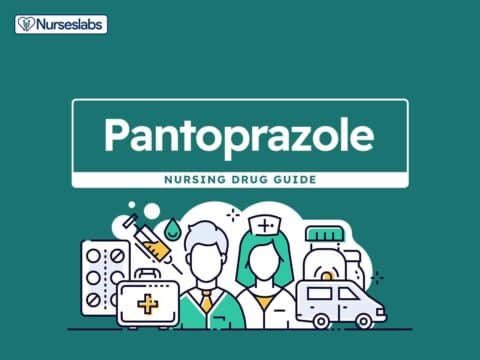
![Lisinopril Nursing Considerations and Patient Teaching [Drug Guide]](https://nurseslabs.com/wp-content/uploads/2023/03/Lisinopril-480x360.jpg)







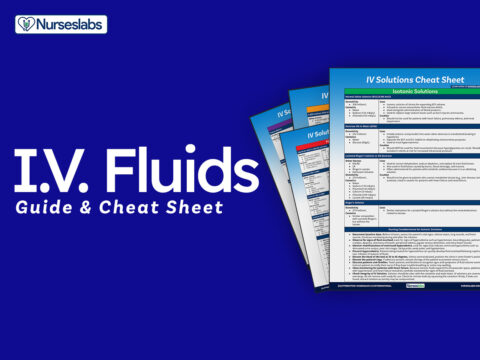













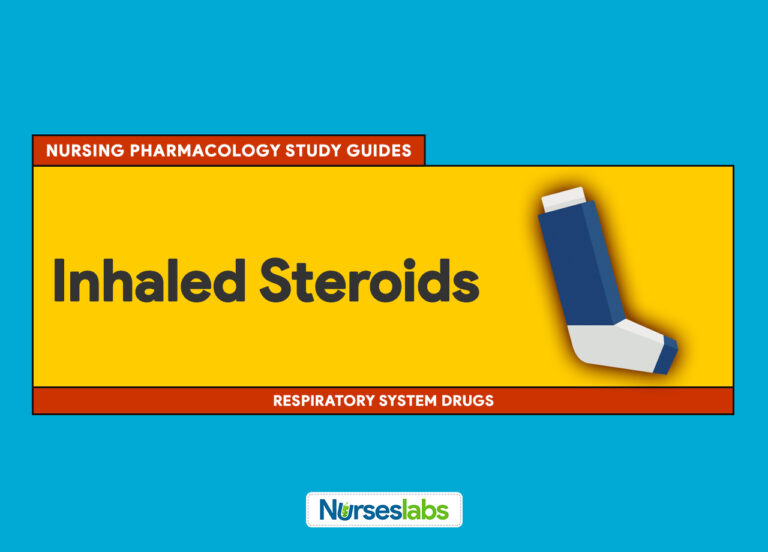

![Furosemide Nursing Considerations and Patient Teaching [Drug Guide]](https://nurseslabs.com/wp-content/uploads/2023/07/Furosemide-768x576.jpg)

Leave a Comment